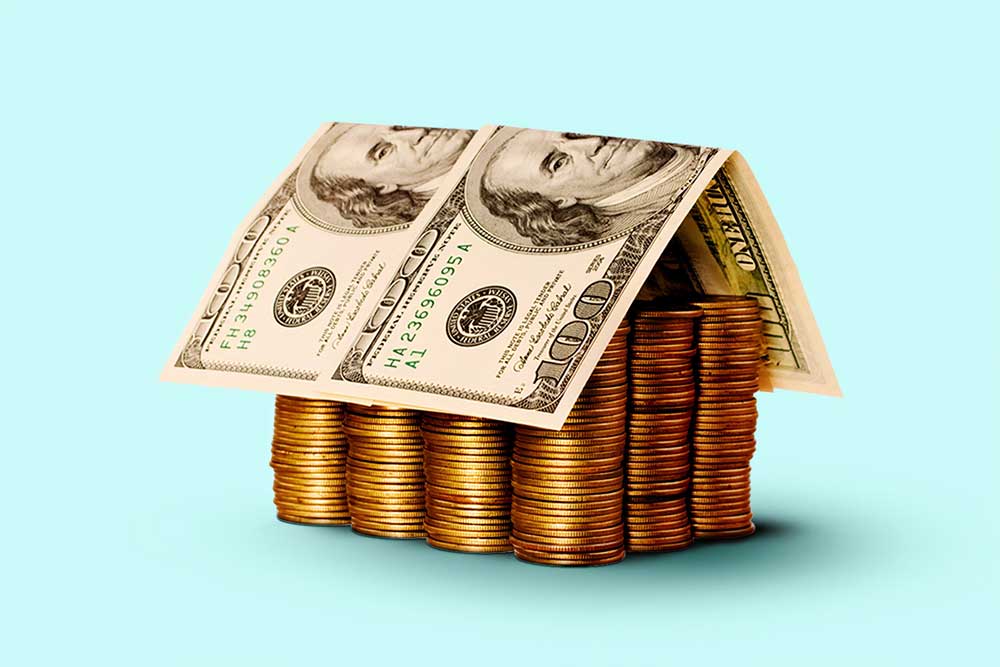
Whether you have managed to save up a significant down payment or you are just starting to save, you may be wondering what the typical down payment for a vacation home is. After all, it can take substantial time and fiscal discipline to save up enough to purchase a second home. In this article, we consider what you should expect to save as a down payment for a vacation home, with reference to the policies and practices of some of the largest banks in the United States and Canada.
General Requirements
While certain lenders may require a down payment of only 5% for a primary residence, many lenders in the United States and Canada will require a down payment of at least 20% for a second home. This is because second homes are inherently more risky as borrowers are more likely to default on repaying the mortgage on their second home. After all, borrowers faced with financial hardship will typically prioritize repayment of a mortgage on their primary residence as they need a place to live.
Using 20% as an example, if you’ve managed to save up $50,000, then the maximum vacation home you can afford is $250,000 ($50,000 / 20%) regardless of your overall financial picture. If you’ve managed to save up $100,000, then you can afford a vacation home with a purchase price of up to $500,000.
Yet these are just general rules of thumb and, depending upon the use of the property, there may be certain lenders willing to accept a more modest down payment. In order to provide more specific information, we have included more detailed guidelines for borrowers in the United States and Canada below.
United States Requirements

The size of your down payment will depend, in part, on the type of mortgage you choose. Each mortgage type will have its own guidelines and eligibility criteria to consider. Briefly, the following types of mortgages may be available to you:
- Veterans Affairs (VA) loans – VA direct and VA-backed Veterans home loans are only available to Veterans, service members, and their survivors, typically with no down payment.
- Federal Housing Administration (FHA) Loans – FHA loans are another government sponsored loan program that has been around since 1934, characterized by low down payments (as low as 3.5%), low closing costs and easy credit qualifying. FHA loans, however, are only available for primary residences.
- Conventional Loans – unlike VA and FHA loans, conventional loans are not guaranteed or insured by a government agency. For conventional loans (and FHA loans), mortgage insurance may be required with a smaller down payment (i.e. less than 20%).
Conventional loans are often available for vacation homes but mortgages for such properties are typically accompanied by larger down payment requirements (at least 20%), higher interest rates and more conservative lending guidelines. If you intend on renting out your vacation home, then a lender may consider it as an “investment property” (as opposed to a “second home”), which tend to have even higher interest rates and down payment requirements (i.e. 25% or more). The reason for this is the risk profile of an investment property as owners may be more willing to walk away from their mortgage payment obligations when faced with financial hardship. To summarize, depending upon how you use your vacation home, expect to save at least 20%-25% of the purchase price as a down payment.
Fore more information on vacation home mortgages from America’s “big four” banks, click on the following:
Canadian Requirements

In Canada, down payment requirements for primary residences differ depending upon the purchase price of your home. Amounts range from 5% of the purchase price for homes $500,000 or less up to 20% of the purchase price for homes $1 million or more.
The rules also differ for vacation homes, in particular as between vacation homes purchased for personal use versus vacation homes used as a rental property. As rental properties are often seen as higher risk, more stringent qualifying criteria may apply than if the vacation home is for personal use only. As outlined by National Equity Lending, you may still be able to buy a second home with as little as 5% down with the relevant insurance premium added to the mortgage. With 20% down, most lenders will finance your mortgage as a conventional loan. For rental properties, however, you will likely need at least 20% down and even then you are limited to only a few lenders who are willing to lend to you with no insurance premium added to the mortgage. In order to avoid insurance premiums and open it up to a larger pool of lenders, you will likely need at least 25% down.
Fore more information on vacation home mortgages from Canada’s “big five” banks, click on the following:
Advantages of a Higher Down Payment
A larger down payment has several advantages, including:
- More borrowing options
- Better interest rates
- Higher initial equity position
- Lower mortgage payments
Simply put, the higher the down payment the more loan options will likely be available to you at more competitive rates. By putting 30% down, for instance, lenders lower their risk profile by allocating some of the risk to you as the borrower. The thinking is that by having more “skin in the game” so to speak, you will be less likely to default on your loan. Also, your mortgage payments will be lower since you will be borrowing less money thereby paying less interest over the life of the loan. Further, if you intend on renting out your property then it will be easier to turn a profit since the cost of servicing your mortgage will be less.
Before deciding on a larger down payment, be sure to use our vacation home mortgage calculator to better understand the monthly costs of servicing your mortgage based on different down payment scenarios. It’s also a good idea to keep some savings left over as you may need funds for necessary maintenance and repairs following your purchase.
For more information on vacation home affordability, be sure you read our article on How Much Vacation Home Can I Afford?
